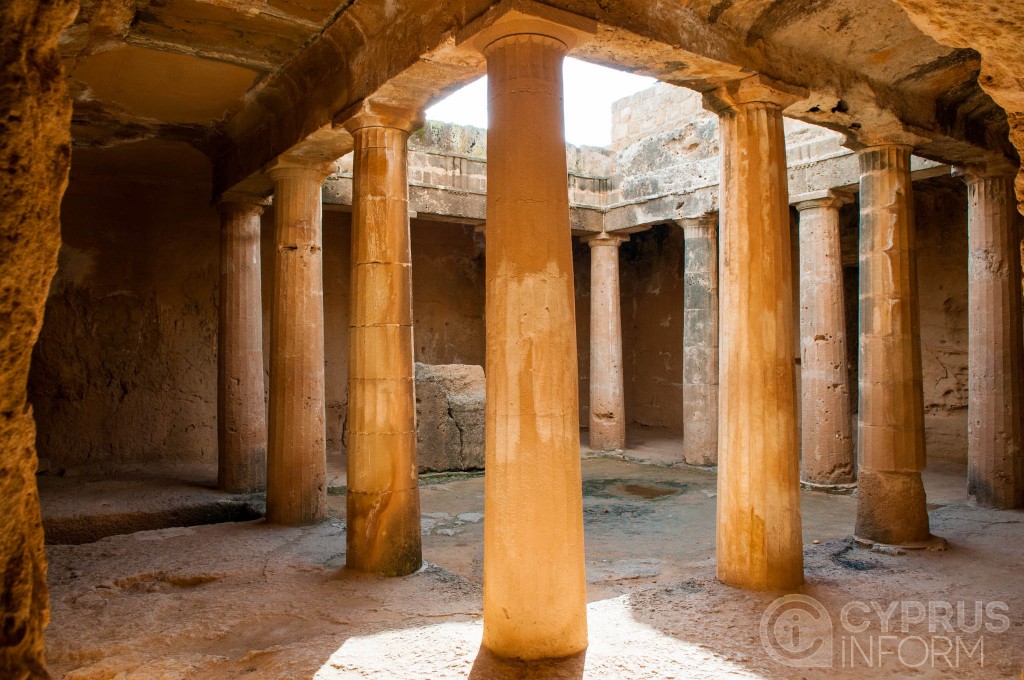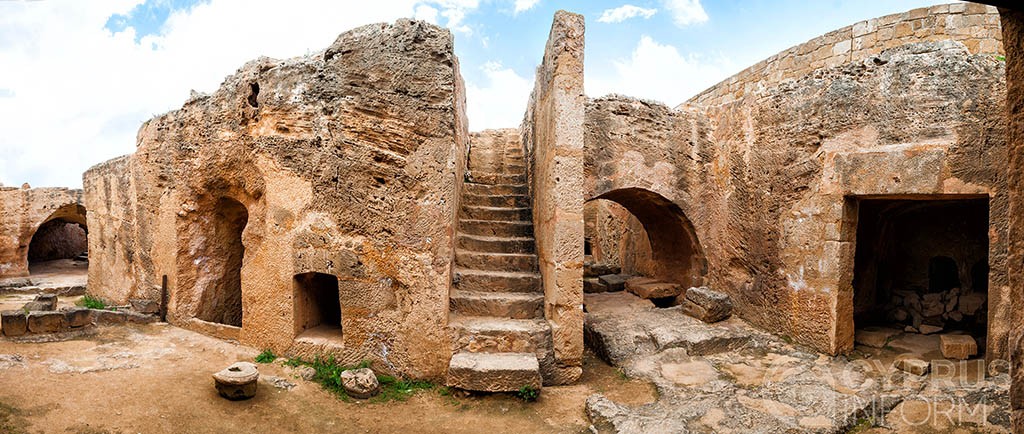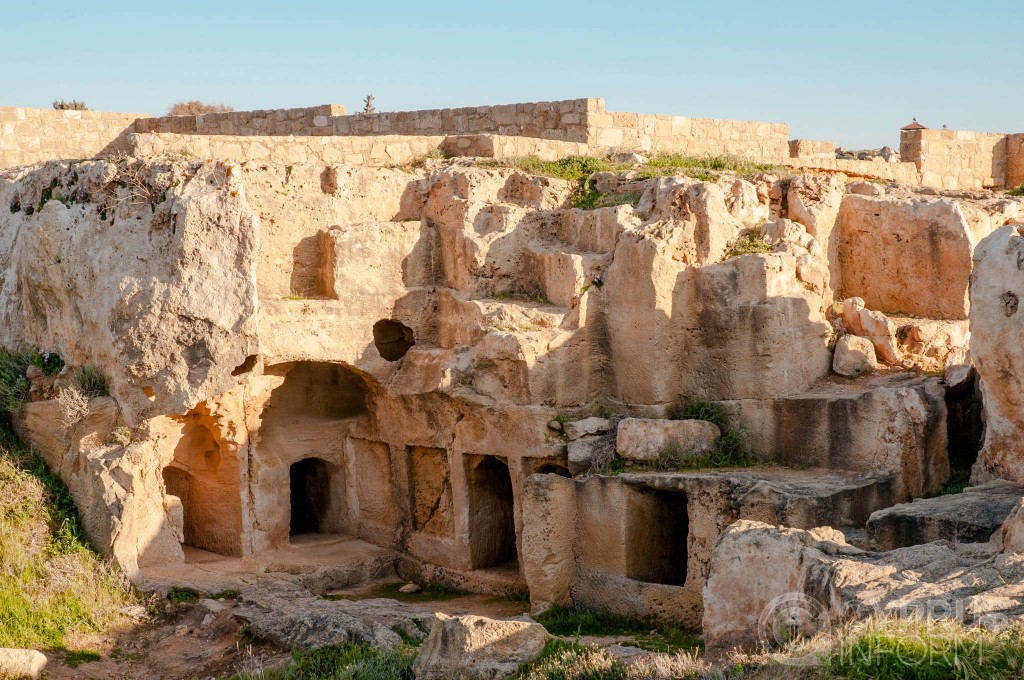The history of the Royal Tombs
This large necropolis, Tombs of the Kings, is located 2 km north-west of the tourist centre of Paphos, on the edge of the Northern Necropolis.
There is no historical evidence that the name of the tombs was received from the graves of Cypriot kings; most probably the place got its name because of its monumental forms and splendid decorations.
The tombs are thought to have been in Paphos since the Hellenistic and Roman periods. Most stately rooms were dug out of solid rock and mimic conventional homes.
According to some researchers, up to the year 300 B.C. the local elite (high-ranking officials and prominent figures) were buried in a place known as the royal tombs. Later, a larger number of graves began to appear in the necropolis, but the poorer families had to use the same grave several times.
With the advent of Christianity in Cyprus, early Christians used the tombs as a place of refuge, and in the Middle Ages some of the rooms were used as temporary homes.
Unfortunately the most important historical and ancient object in Paphos has been known for centuries, and has not only been repeatedly plundered but was also used for stone quarry works. Serious archaeological investigations at the site were only held in the 1970’s-80s.
Tombs of the Kings, along with the archaeological park of Lower Paphos (Kato Paphos), are included in the list of World Cultural Heritage by UNESCO.
Interesting Facts

- Some of the findings from the Tombs of the Kings are stored in the Archaeological Museum of Paphos.
- There is believed to be more than 100 different tombs in the Tombs of the Kings.
- The Tombs of the Kings has been repeatedly looted. One of the robbers appeared to be an American military officer named Luigi Palma di Chesnola. At the end of the 19th century Chesnola arrived in Cyprus as a part of the diplomatic corps when the United States began their private archeological digs. In the pursuit of treasure, breaking every imaginable rule of excavation and the subsequent transport of the finds, without sharing and tagging the found archaeological objects and then trying to sell them all over the world, Chesnola caused enormous damage to the ancient monuments. Eventually, after many complications, the Cypriot ancient finds were purchased by the US Embassy and became an occasion for creating the Metropolitan Museum in New York.
How is the museum used today?
The Tombs of the Kings is now an archaeological park and is open for organized tour groups and individuals.
You will need about 2-3 hours in order to explore all the tombs. Visitors have the opportunity to look in almost every one of them.
- Summer (from April 16 to September 15): daily from 08:30 to 19:30;
- Winter (from September 16 to April 15): daily from 08:30 to 17: 00;
- Closed for Christmas, Easter (Sunday Greek Orthodox Easter) and the New Year.
Tickets
- €2.50;
- For groups of 10 people – 20% discount.
How to get to the royal tombs
Tombs of the Kings is located in the northern part of New Paphos, north-east of the city walls. By public transport from the waterfront area of Paphos and Coral Bay, the tombs can be reached by №615 bus.
Motorists should take the Tombs of the Kings Avenue, following the brown signs. If you’re coming from the centre of Paphos, turn into the parking lot at the Tombs of the Kings and, left on the road, travel towards the Elysium Hotel.

